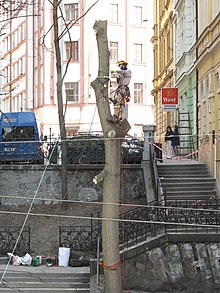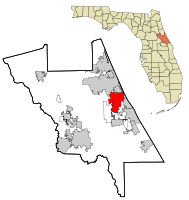Title: Navigating the Search for Proficient Tree Removal Services in Port Orange, FL
In the picturesque city of Port Orange, FL, where the verdant canopy of trees adds charm and character to the landscape, the need for tree removal services can arise unexpectedly. What is the Best Approach to Choosing the Best Tree Removal Professional in Port Orange, FL? Discover Expert Tree Removal Services Today! . Whether due to storm damage, disease, or safety concerns, the task of removing a tree should always be handled by professionals. However, selecting the right tree removal specialist is not a decision to take lightly. It requires careful consideration and due diligence to ensure that the job is carried out safely, efficiently, and ethically. Here is a guide to help you navigate the process of choosing the best tree removal professional in Port Orange, FL.
Understanding Your Needs:
Before beginning your search, it's imperative to understand the scope of the work needed.
What is the Best Approach to Choosing the Best Tree Removal Professional in Port Orange, FL? Discover Specialist Tree Removal Services Today! Obstruction - Obstruction
- Brush
- Tree Service
- Tree Trimming Near Me
- Hazard
- Arborist
Research and Recommendations:
Start by researching local tree removal companies. A good starting point is to ask for recommendations from friends, family, or neighbors who have had similar work done. Online reviews and ratings on platforms such as Google, Yelp, or the Better Business Bureau can also provide insights into the reputation and reliability of local services.
Check Credentials and Insurance:
The importance of hiring a tree removal professional with the proper credentials cannot be overstated. Look for services that are licensed and insured. A reputable company will have liability insurance and workers' compensation, which protects you and your property in case of any accidents. Don't hesitate to ask for proof of insurance before making a decision.
Experience and Expertise:
Experience is a critical factor when it comes to tree removal. An experienced professional will have the knowledge and skill to handle complex situations safely. Inquire about the company's track record, the experience of their team, and whether they have expertise in dealing with your specific type of tree or situation.
Equipment and Safety Measures:
The right equipment is essential for safe and efficient tree removal. The company should have well-maintained equipment suitable for the job at hand. Additionally, professional tree removal experts should adhere to strict safety standards to protect their workers and your property. Ask about their safety protocols and whether they follow industry best practices.
Estimates and Contracts:
Obtain detailed written estimates from several companies.
What is the Best Approach to Choosing the Best Tree Removal Professional in Port Orange, FL? Discover Specialist Tree Removal Services Today! - Transport
- Transport
- Extermination
- Overgrowth
- Obstruction
- Dismantle
Communication and Professionalism:
Throughout the process, pay attention to how the company communicates with you.
What is the Best Approach to Choosing the Best Tree Removal Professional in Port Orange, FL? Discover Specialist Tree Removal Services Today! - Assessment
- Trunks
- Arboriculture
- Limb
- Felling
- Sawing
- Survey
By following these guidelines, you can approach the task of choosing the best tree removal professional in Port Orange, FL, with confidence. Remember that the right provider will not only offer competitive pricing but also prioritize safety, quality, and customer satisfaction. With the right partner, you can ensure that your tree removal needs are met with the utmost professionalism and care.









